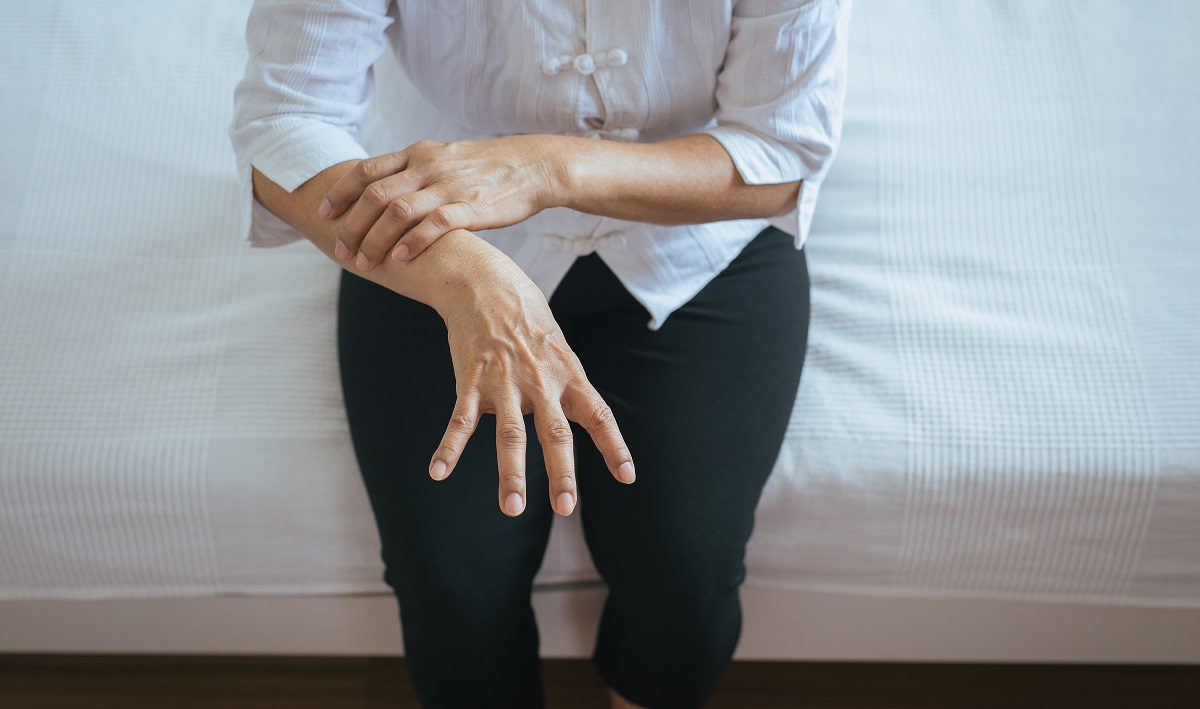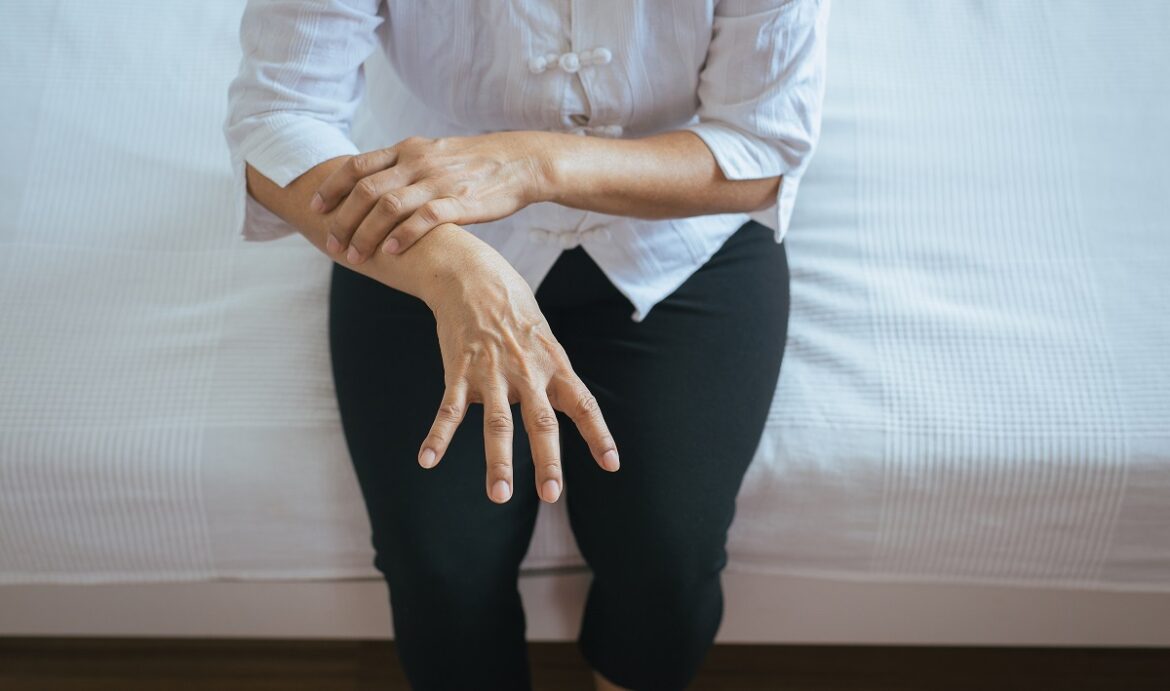-
 play_arrow
play_arrow
BayRadio Listen Live Broadcasting in Spain
A Silent Disease: The Early Signs of Parkinson’s You Shouldn’t Ignore


Elderly woman suffering with parkinson's disease symptoms
Currently, over 10 million people worldwide are living with Parkinson’s disease, a progressive neurodegenerative disorder that affects movement control. This condition, in which 10% of cases involve individuals under 50, is caused by the loss of dopamine-producing neurons in the brain’s “substantia nigra,” leading to motor symptoms such as resting tremor, muscle rigidity, slowness of movement, and postural instability. But Parkinson’s is more than a movement disorder—it also brings lesser-known symptoms like depression, sleep disturbances, and even cognitive decline.
We spoke with Dr. Erika Torres, head of the Neurosciences Unit at Quirónsalud Torrevieja and Quirónsalud Alicante, to better understand the symptoms and the most effective treatments available for this condition.
Causes and Diagnosis
Although a single cause of Parkinson’s has not been identified, experts agree that it arises from a combination of genetic and environmental factors. Certain genetic mutations are associated with the disease, but most cases are idiopathic or “sporadic.” Environmental risk factors may include exposure to pesticides, heavy metals, and, in some cases, viral infections.
“Unlike other neurological disorders, Parkinson’s combines both motor and non-motor symptoms that greatly affect patients’ quality of life,” explains Dr. Torres. “It’s a multifactorial disease involving both genetic predisposition and environmental triggers.”
Diagnosing Parkinson’s is relatively straightforward for movement disorder specialists. Most diagnoses are clinical and based on a thorough patient history and neurological examination. “Early symptoms can be subtle and are often mistaken for normal aging,” Dr. Torres points out. “Parkinson’s is usually diagnosed between ages 55 and 65, but early signs may appear sooner. These include loss of smell, persistent constipation, sleep disturbances, and slight motor asymmetry.” Such signs can precede more noticeable motor symptoms by several years.
Medication as Treatment
While there is no cure for Parkinson’s, various treatments can help patients maintain a good quality of life for many years. Drug therapy is the cornerstone of Parkinson’s management and includes medications that restore dopamine levels or enhance its effect and bioavailability:
- Levodopa and carbidopa: This is the foundational and most effective treatment. Levodopa converts to dopamine in the brain, while carbidopa prevents its breakdown outside the brain.
- Dopamine agonists: Such as pramipexole, ropinirole, and rotigotine, which stimulate dopamine receptors and enhance its effect in the brain.
- MAO-B inhibitors: These prevent the breakdown of dopamine in the brain.
- COMT inhibitors: These extend the effectiveness of levodopa by prolonging dopamine activity.
- Amantadine: Useful for controlling dyskinesias—uncontrolled movements caused by levodopa.
As the disease progresses and both motor and non-motor fluctuations occur, medication regimens often need to be adjusted and combined. During “off” periods—when medication effects wear off—rescue therapies (subcutaneous, sublingual, or inhaled) may be used.
When standard medications no longer provide sufficient symptom control due to complications, second-line therapies may be considered, tailored to the patient’s age and limiting symptoms. These include:
- Continuous infusion pumps, either subcutaneous (dopamine agonists and levodopa) or intraduodenal via PEG (levodopa gel)
- Deep brain stimulation (DBS): Surgical implantation of electrodes for neural modulation
- HIFU (High-Intensity Focused Ultrasound): Non-invasive ultrasound that targets specific brain regions to relieve symptoms
“It’s crucial for neurologists to time these therapies appropriately,” says Dr. Torres. “Poor timing can lead to premature severe complications or an inadequate therapeutic response.”
Surgical Therapy
When medications become less effective or cause severe fluctuations, surgical options may be considered for advanced cases. One such treatment is Deep Brain Stimulation (DBS), where electrodes are implanted in targeted brain areas to modulate neural activity with electrical impulses, helping control motor symptoms.
“DBS can significantly improve quality of life and reduce the need for medication,” affirms Dr. Torres.
Beyond Surgery and Medication: Physiotherapy and Psychological Support
Parkinson’s treatment doesn’t end with drugs or surgery. A comprehensive approach including physiotherapy, occupational therapy, speech therapy, and psychological support is equally important to enhance patients’ day-to-day life.
“Physical therapy and regular exercise improve mobility, balance, and strength, while occupational therapy helps patients manage daily activities more efficiently,” says Dr. Torres. Speech therapy is also essential to manage voice and swallowing issues, especially in later stages. A balanced diet rich in antioxidants, fiber, and carefully managed protein intake can further support physical well-being.
According to Dr. Torres, psychological and social support are also vital: “Depression and anxiety are very common in Parkinson’s and may even precede motor symptoms. Psychological care improves both mood and treatment adherence.” Support for caregivers and families is also crucial, as the disease affects the entire social environment.
The Future of Parkinson’s in the Hands of Science
Although there is no cure yet, research is advancing rapidly to develop treatments that not only alleviate symptoms but modify the course of the disease. “We are closer to developing disease-modifying therapies. Several clinical trials are in advanced stages and could transform treatment in the coming years,” notes Dr. Torres.
Promising avenues include:
- Gene therapy: Introducing genes to increase dopamine production in the brain
- Stem cell therapy: Implanting dopamine-producing neurons derived from stem cells
- New drugs: Vaccines targeting alpha-synuclein, a toxic protein that accumulates in Parkinson’s, are under trial
Quirónsalud: A Benchmark in Parkinson’s Care
Hospital Quirónsalud Torrevieja is one of Spain’s leading medical centers, offering an innovative roadmap for treating neurological diseases like Parkinson’s. Their comprehensive, person-centered approach combines state-of-the-art therapies and equipment with excellence in patient care provided by a top-tier professional team.
At Quirónsalud, you are in good hands. Their healthcare model ensures patients receive rapid, personalized, and effective care with all doubts addressed—focused on improving each patient’s quality of life.
Written by: Lily
Similar posts
Recent Posts
- Breast lift surgery: everything you need to know
- A Silent Disease: The Early Signs of Parkinson’s You Shouldn’t Ignore
- British buyers still top foreign home purchases in Spain: despite Brexit, UK leads the way in 2024
- Torrevieja unveils the charity race “5K Steps That Matter by Quirónsalud” in aid of AFECÁNCER
- Discover how breast reduction can transform your life: from pain to confidence

Ctra. Cabo La Nao, CC La Nao, Local 6 03730 Javea, Alicante, Spain
Advertise with us
Do you have a business in Spain? Do you provide a service to the expat community in Spain? Would you like your message to reach over 500.000 people on a weekly basis?
BayRadio is a community orientated radio station offering fantastic content to our many listeners and followers across our various platforms. Contact us now and find out what Bay can do for you!
Our business is helping your business grow.
BAY RADIO S.L. © 2024. ALL RIGHTS RESERVED. WEB DESIGN BY MEDIANIC








Post comments (0)